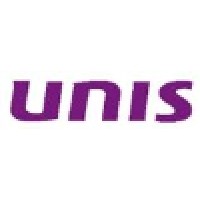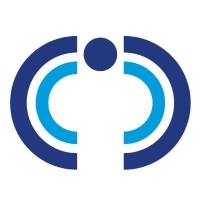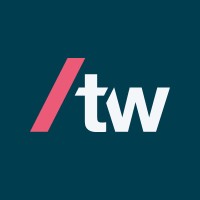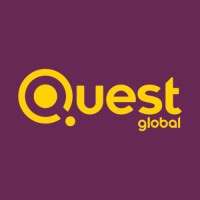
Tsinghua Unisplendour Co., Ltd Company Cyber Security Posture
thunis.comTsinghua Unisplendour is a computer software company based out of BEIJING. Tsinghua Unisplendour representatives, don’t miss out on opportunities to build relationships with members on LinkedIn. Claim your page, write a simple description, and share content to attract followers that can lead to new customers, brand fans, and future employees. Go here to get started: http://linkd.in/1DUpBvu
TUCL Company Details
tsinghua-unisplendour-co-ltd
10,001+ employees
849
none
Information Technology & Services
thunis.com
4
TSI_1472613
In-progress
Between 800 and 900
This score is AI-generated and less favored by cyber insurers, who prefer the TPRM score.
 TUCL Global Score
TUCL Global Score.png)

Tsinghua Unisplendour Co., Ltd Company Scoring based on AI Models
| Model Name | Date | Description | Current Score Difference | Score |
|---|---|---|---|---|
| AVERAGE-Industry | 03-12-2025 | This score represents the average cybersecurity rating of companies already scanned within the same industry. It provides a benchmark to compare an individual company's security posture against its industry peers. | N/A | Between 800 and 900 |
Tsinghua Unisplendour Co., Ltd Company Cyber Security News & History
| Entity | Type | Severity | Impact | Seen | Url ID | Details | View |
|---|
Tsinghua Unisplendour Co., Ltd Company Subsidiaries

Tsinghua Unisplendour is a computer software company based out of BEIJING. Tsinghua Unisplendour representatives, don’t miss out on opportunities to build relationships with members on LinkedIn. Claim your page, write a simple description, and share content to attract followers that can lead to new customers, brand fans, and future employees. Go here to get started: http://linkd.in/1DUpBvu
Access Data Using Our API

Get company history
.png)
TUCL Cyber Security News
Arm of China-Controlled Tsinghua to Buy 15% Stake in Western Digital
Deal comes as U.S. tech companies scramble for politically connected Chinese partners amid difficult business environment.

TUCL Similar Companies

Computacenter
Computacenter is a leading independent technology and services provider, trusted by large corporate and public sector organisations. We are a responsible business that believes in winning together for our people and our planet. We help our customers to Source, Transform and Manage their technol

Huawei Enterprise
Huawei Enterprise Business Group (EBG) is committed to bring digital to every organization for a fully connected, intelligent world, including government and public sectors, financial services, energy, transportation, and manufacturing, and other sectors. Huawei focus on ICT infrastructure and utili

Thoughtworks
Thoughtworks is a pioneering global technology consultancy, leading the charge in custom software development and technology innovation. We empower ambitious businesses to thrive in a constantly evolving world. We integrate the best of strategy, design, and software engineering to provide our client

RICOH Company Limited
Ricoh is a leading provider of integrated digital services and print and imaging solutions designed to support digital transformation of workplaces and optimize business performance. Headquartered in Tokyo, Ricoh’s global operation reaches customers in approximately 200 countries and regions, suppo

IT Six Global Services
IT Six Global Services is a global technology and outsourcing company committed to deliver innovation through software services. With partners in the US, Germany, Switzerland, Norway, England and the Netherlands, IT Six has become one of the largest software houses in the region, known for the quali

Exela Technologies
Exela is a business process automation (BPA) leader, leveraging a global footprint and proprietary technology to provide digital transformation solutions enhancing quality, productivity, and end-user experience. With decades of expertise operating mission-critical processes, Exela serves a growing

Frequently Asked Questions
Explore insights on cybersecurity incidents, risk posture, and Rankiteo's assessments.
TUCL CyberSecurity History Information
How many cyber incidents has TUCL faced?
Total Incidents: According to Rankiteo, TUCL has faced 0 incidents in the past.
What types of cybersecurity incidents have occurred at TUCL?
Incident Types: The types of cybersecurity incidents that have occurred include .
Incident Details
What are the most common types of attacks the company has faced?
Additional Questions
What Do We Measure?
















Every week, Rankiteo analyzes billions of signals to give organizations a sharper, faster view of emerging risks. With deeper, more actionable intelligence at their fingertips, security teams can outpace threat actors, respond instantly to Zero-Day attacks, and dramatically shrink their risk exposure window.
These are some of the factors we use to calculate the overall score:
Identify exposed access points, detect misconfigured SSL certificates, and uncover vulnerabilities across the network infrastructure.
Gain visibility into the software components used within an organization to detect vulnerabilities, manage risk, and ensure supply chain security.
Monitor and manage all IT assets and their configurations to ensure accurate, real-time visibility across the company's technology environment.
Leverage real-time insights on active threats, malware campaigns, and emerging vulnerabilities to proactively defend against evolving cyberattacks.




